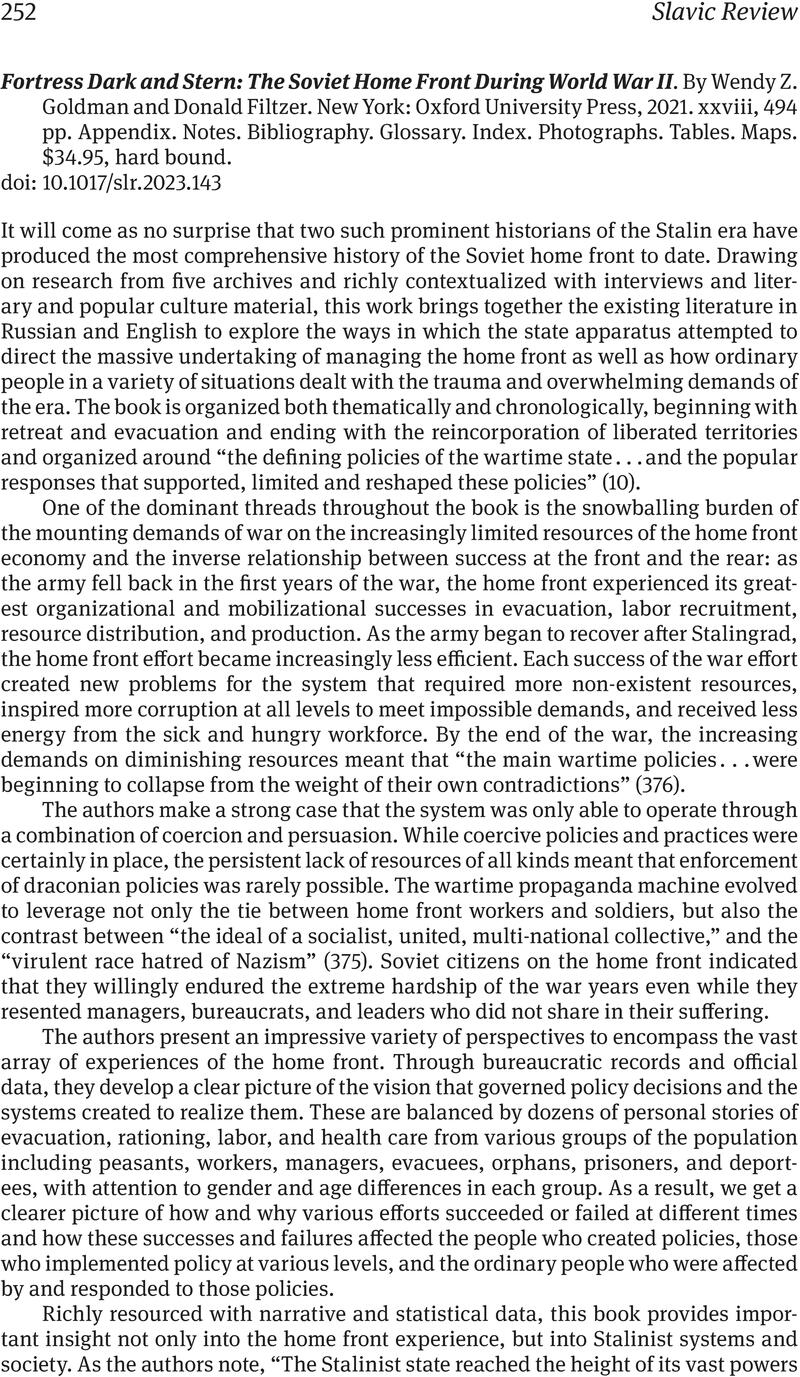No CrossRef data available.
Article contents
Fortress Dark and Stern: The Soviet Home Front During World War II. By Wendy Z. Goldman and Donald Filtzer. New York: Oxford University Press, 2021. xxviii, 494 pp. Appendix. Notes. Bibliography. Glossary. Index. Photographs. Tables. Maps. $34.95, hard bound.
Review products
Fortress Dark and Stern: The Soviet Home Front During World War II. By Wendy Z. Goldman and Donald Filtzer. New York: Oxford University Press, 2021. xxviii, 494 pp. Appendix. Notes. Bibliography. Glossary. Index. Photographs. Tables. Maps. $34.95, hard bound.
Published online by Cambridge University Press: 03 August 2023
Abstract
An abstract is not available for this content so a preview has been provided. Please use the Get access link above for information on how to access this content.

- Type
- Book Review
- Information
- Copyright
- Copyright © The Author(s), 2023. Published by Cambridge University Press on behalf of the Association for Slavic, East European, and Eurasian Studies


